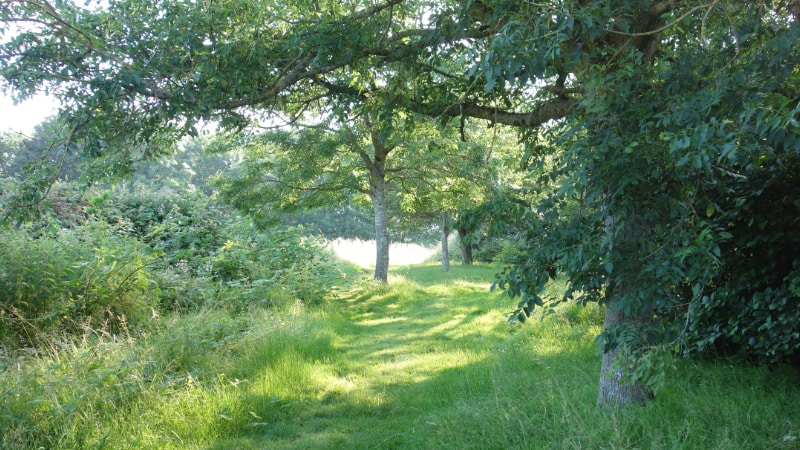“River Exe green spaces and heritage harbour site threatened by ‘Liveable Exeter’ development scheme,”
.
Exeter promotes itself as a ‘green city’ – but how is that really working out?
Exeter not doing very well on transport… – Vision Group for Sidmouth
The ‘Net Zero’ Exeter plan at risk – Vision Group for Sidmouth
The Exeter Observer certainly thinks the city could be doing much better:
However, a new report just out suggests that Exeter is indeed the ‘greenest city’ in the UK:
Exeter is the British city with the most green space, beating Islington, Bristol, Bournemouth and Cambridge to claim the top spot as Britain’s greenest urban area. Scientists from the University of Sheffield and Flinders University in Australia factored in tree cover and amount of vegetation as well as public green spaces such as parks and sports pitches in 68 city centres that were home to more than 100,000 people around the UK. There is a clear north-south divide, the scientists say, with the top five greenest areas in the south of England and the five least green in the north of England or Scotland.
Britain’s least green city revealed
The VGS social media pages carried the story earlier in the week:
Exeter city centre ‘greenest’ in Britain, University of Sheffield researchers find – BBC News
The Telegraph was enthusiastic about the greenness of the city and surrounds:
Exeter, which boasts more than a dozen public parks, lots of playing fields, several much-loved and distinctive “valley” parks, pretty squares and tree-filled spaces came top of 68 conurbations with populations of at least 10,000. But parks and tree cover don’t fully reveal the whole green truth about this somewhat overlooked city. Take a look at Devon Wildlife Trust’s detailed map and you’ll see Exeter abounds in important habitats and biodiversity sanctuaries. One way to explore the natural attractions is to walk the Exeter Green Circle, a 12-mile route that runs around the city linking many of its leafy spaces together.
In praise of Exeter, the UK’s greenest city
And Devon Live also looked at the report – which compared Exeter with other cities, including Sheffield itself:
The University of Sheffield has carried out research into the green attributes of city centres in England, Scotland and Wales. The findings showed that many of the greener cities were located in the South of England, including Exeter which came out on top. The study was comprised of 68 municipalities with populations of at least 10,000.
Researchers determined presence of vegetation with a measure known as the normalised difference vegetation index (NDVI). They also used satellite observations of light absorption and reflection in order to measure vegetation cover. Tree cover and the presence of parks was also taken into consideration.
It was noted that although Sheffield is regarded as the UK’s greenest city, its industrial heritage means that it lacks green space in the city centre. Dr Brindley added: “This highlights why the study is so important and the vital need to identify green space inequalities even in the least obvious places and promote measures to address them. For example, work is already being done in Sheffield’s city centre to bring it in line with the leafy suburbs and vast parks just a short walk away from the heart of the city which make it the greenest overall in the UK.”
Exeter named greenest urban city in Britain – Devon Live
Ironically, Sheffield has been at the centre of a long-running campaign to save its ‘leafy suburbs’ from the designs of local councillors:
Our Trees in Sheffield: why we care so much about urban trees – Vision Group for Sidmouth
The local councillors of the city of Exeter have indeed got their green spaces and tree strategies:
Exeter City Council Parks and Green Spaces.pdf
Of which they are justly proud:
Exeter is a green city, with peaceful parks and beautiful, historical gardens to be found around every corner. The Grade II listed Northernhay Gardens are the oldest public gardens in England, and neighbouring Rougemont Gardens originally formed part of the defences to Exeter Castle. The University of Exeter is regarded as the best University botanical garden in the UK – find out more on a garden tour. Exeter is surrounded by green space; discover the city’s valley parks on the Green Circle Walk, or head further afield to wide open countryside.
But such a wealth of green open spaces is not due to the current administration of course.
And, returning to the Exeter Observer, the current administration doesn’t really seem to value what it is custodians of:

Exeter Civic Society and the progressive group of Green, Liberal Democrat and Independent city councillors have raised the alarm at the prospect of development on green spaces beside the River Exe and a heritage harbour site in the city’s historic canal basin. Exeter City Council is considering developing sites at Bonhay Meadows, the canal basin and in the heart of Riverside Valley Park as part of its “Liveable Exeter” property development scheme while claiming that the scheme “will protect and enhance Exeter’s exceptional natural and historic environment, safeguard its iconic landscape setting and encourage high-quality design that complements and enhances the city’s heritage.”